Haworthia Cooperi: Care Guide For The Transparent Succulent
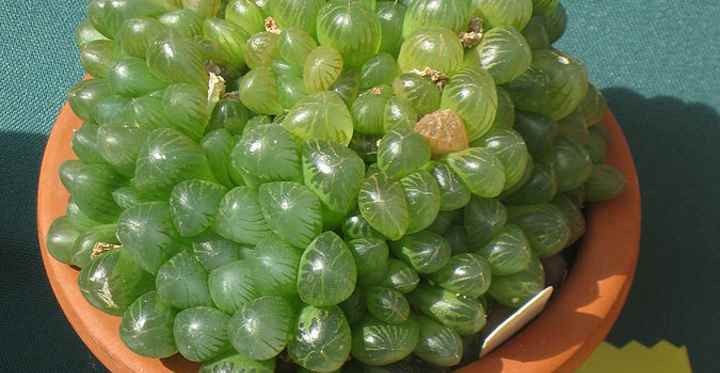
The Haworthia cooperi is a small rare succulent plant with fleshy translucent leaves. The “see-through” Haworthia cooperi succulent has shiny transparent leaves that grow in a rosette pattern in sandy soil. Depending on the Haworthia cooperi cultivar, the plump leaves can be triangular-shaped or globular.
This Haworthia plant is very easy to grow at home. If you hold the small clumping succulent to the light, you will be able to see through its transparent leaves.
How to care for Haworthia cooperi: The translucent succulent thrives in bright, indirect light, well-draining loamy soil, and average humidity. Water the Haworthia cooperi occasionally when the soil dries. The transparent plant grows in temperatures between 68°F and 90°F (20°C – 32°C). Fertilize twice a year in fall and spring.
At first glance, the Haworthia cooperi doesn’t seem real at all. This rare succulent has unusual soft and fleshy translucent leaves, and you can see through them at the tips.
The Haworthia cooperi plants are slow-growing, so you may not notice much growth. But, all they need to grow is warmth, light, and occasional watering.
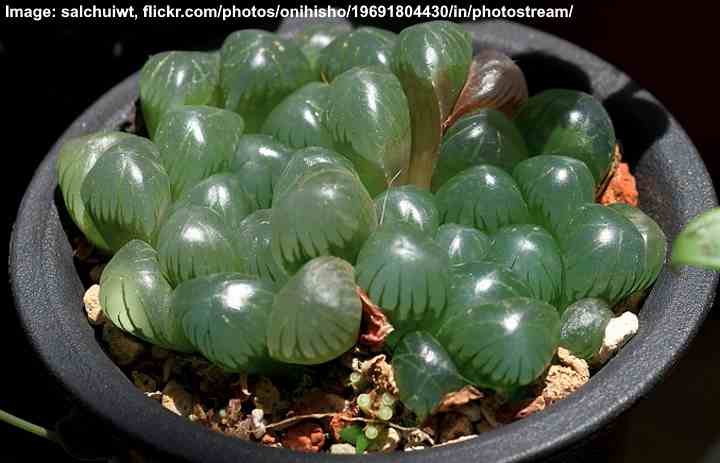
Haworthia cooperi ‘Truncata’ is a beautiful cultivar with transparent succulent leaves
Haworthia cooperi is a species of succulent in the family Asphodelaceae. This type of Haworthia is identified by its tiny, fleshy soft green leaves. You’ll also notice that the leaves have bristly margins and transparent tips. Some rare Haworthia cooperi varieties have completely translucent, see-through leaves that help to identify them.
Common names for the Haworthia cooperi include window haworthia, cushion aloe, Cooper’s haworthia, pussy foot, and star window plant.
Haworthia cooperi is also a species of flowering succulent. Inconspicuous white flowers bloom in summer on the end of long stems. Although this window plant grows well indoors, it rarely flowers as a houseplant. However, its attractive feature is the clump of soft fleshy leaves with clear tops.
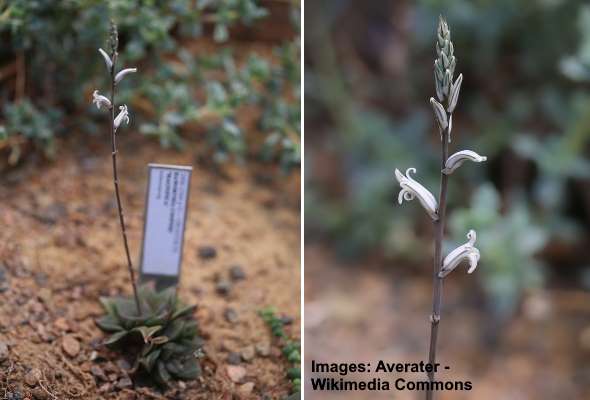
Flowers of Haworthia cooperi ‘Magnifica’
This article is a complete guide on how to care for translucent succulents such as Haworthia cooperi. At the end of the article, you’ll learn about some stunning Haworthia cultivars.
Haworthia Cooperi Care
Haworthia cooperi succulents are straightforward plants to look after. All they need is some indirect light, warmth, and watering every so often. The most crucial care aspect is appropriate watering as these types of succulents can’t survive in waterlogged soil.
How Much Light Does Haworthia Cooperi Need?
Haworthia cooperi needs four to five hours of morning sun daily. The see-through succulent thrives in bright, indirect sun. So, placing the plant on an east-facing windowsill provides the perfect amount of sunlight. This window plant also grows at south- or west-facing windows if protected from direct sunlight.
Growing as a houseplant, Haworthia cooperi needs just the right balance of light. Too much direct midday sunlight can result in sunburn and discolored leaves. However if the succulents don’t get enough light, growth becomes stretched and curved as the fleshy leaves reach for the light.
The best place to grow Haworthia cooperi outdoors is in a garden spot that enjoys some partial shade. The morning sun is ideal for Cooper’s haworthias as it’s less intense. When planted in a west- or south-facing backyard, grow in a location where there is dappled sunlight or afternoon shade.
How to Water Haworthia Cooperi

Haworthia cooperi ‘Venusta’
Water Haworthia cooperi succulents whenever the soil dries out. During the summer, you may need to water the translucent succulent as often as once a week. In wintertime, reduce the watering frequency to once a month, or even less. Soil moisture is the best guide for Haworthia cooperi watering.
To water Haworthia cooperi, give it a deep watering to thoroughly hydrate the roots. Then, let the excess water drain through holes in the pot’s base. Most importantly—never let a succulent or cacti sit in water.
As with most types of cacti and succulents, over-watering is a more significant threat to Haworthia plants than an occasional drought. These see-through succulents store moisture in their plumpish leaves. So, you can forget to water these drought-tolerant plants for a few weeks without any lasting damage.
The frequency of watering Haworthia cooperi plants depends on several factors. Warm, arid conditions cause potting soil to dry out quicker than colder temperatures. Also, moisture from soil in clay pots evaporates faster than from plastic ones. Succulents need watering less often in winter than in summer.
Even when growing outdoors, Haworthia cooperi succulents are not thirsty plants. However, in hot, arid climates, you might have to water the succulents more frequently. In large outdoor containers or rock gardens, water tends to drain better. If you do over-water outdoor succulents, let the sun dry out the soil before watering again. Also, the plant’s roots can search out moisture when needed during dry spells.
The Best Soil for Growing Haworthia Cooperi
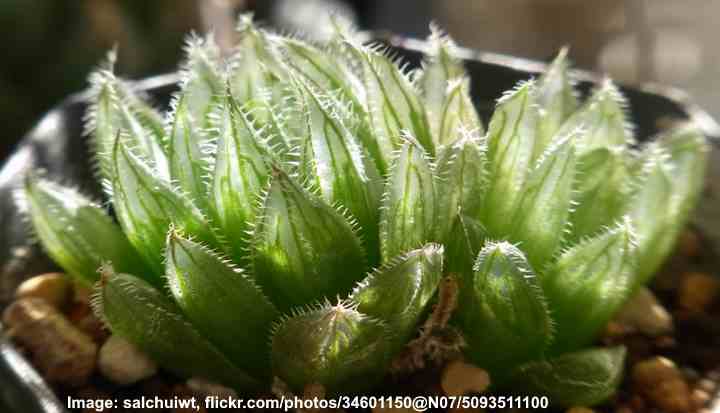
Haworthia cooperi ‘Gordoniana’
Plant a Haworthia cooperi in sandy soil that has excellent drainage. You can use a potting mix for cacti to grow all species of Haworthia succulents, including Haworthia cooperi. To make your own suitable soil for this succulent, combine one-part potting soil, one-part coarse sand, and one-part perlite.
The ideal soil for growing Cooper’s haworthias outside or indoors should allow water to drain fast. Apart from perlite, which is perfect for soil drainage, you can mix in activated charcoal chunks, aquarium gravel, or shredded bark. These soil amendments prevent too much moisture from staying in the soil.
If you are growing Haworthia cooperi outdoors, you can amend garden soil to increase drainage by working in perlite. This non-toxic, natural ingredient is especially useful to aerate dense clay soil.
Temperature for Growing Haworthia Cooperi
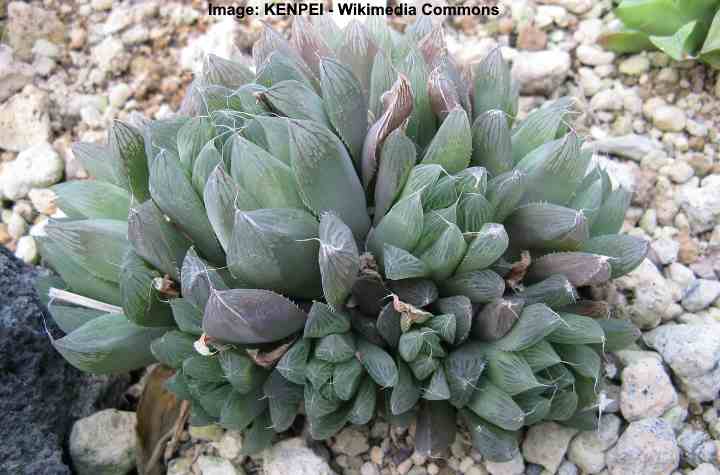
Haworthia cooperi ‘Pilifera’
Haworthia cooperi loves warm temperatures. As a houseplant, the “see-through” succulent thrives in average room temperatures between 68°F and 72°F (20°C – 22°C). Outdoors, Haworthia cooperi grows all year round in USDA zones 9 and 10. Don’t allow the plant to grow in temperatures lower than 40°F (4°C).
If you live in temperate climates, you can take your Haworthia cooperi pots outside in summer. Place them in a spot in your backyard where they get morning sun, but protected from drafts. Take the succulents indoors when the temperatures start dropping below 50°F (10°C).
Like most succulents, temperature extremes can affect the growth of the Haworthia cooperi. Growing as a houseplant, keep the “cushion aloes” away from cold drafts in the summer, such as the air-conditioning airflow. In winter, don’t place near hot radiators.
Humidity for Healthy Haworthia Cooperi Growth

Haworthia cooperi ‘Cooperi’ (left) and H. cooperi ‘Tenera’ (right)
Haworthia cooperi plants don’t have any special humidity requirements. If your house has average humidity, then you don’t need to mist the fleshy leaves. High humidity, cold weather, and over-watering can be detrimental to the plant’s growth.
When growing Haworthia cooperi indoors, it’s essential to pay attention to ventilation. Good air circulation is necessary for healthy succulent growth. Adequate ventilation helps moisture to evaporate faster, reducing the risk of root rot.
How to Fertilize Haworthia Cooperi
Cushion aloes plants (Haworthia cooperi) are not heavy feeders. They only require occasional feeding—maybe just twice a year, in fall and spring—to encourage healthy growth. A fertilizer for succulents or cacti is ideal if you decide to feed your small, compact succulent. Dilute the fertilizer to half-strength before applying.
Related: The Best Houseplant Fertilizers
How to Propagate Translucent Succulents (Haworthia Cooperi)
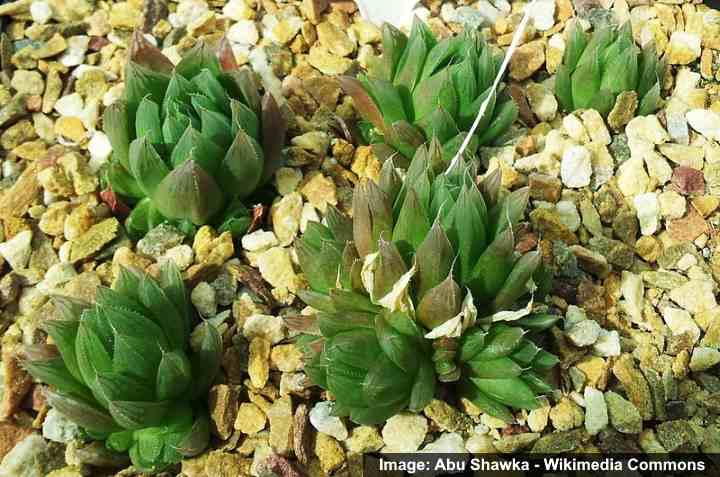
Haworthia cooperi ‘Leightonii’
Propagate Haworthia cooperi plants using offsets or stem cuttings. To grow a new Cooper’s haworthia, cut a healthy leaf from the mother plant. Allow the leaves to dry for a few days so that the “wound” can heal. Lay the leaf cutting on potting soil until roots develop.
Haworthia cooperi plants also grow offsets or “pups” around the base of the mother plant. For propagating, just separate these mini succulents from the mother plant. You can then plant them directly in a small pot with the appropriate potting soil. After a few weeks, the new plants will take root.
Repotting Haworthia Cooperi Succulent Plants
Haworthia cooperi plants rarely need repotting. The most common reason to repot a cushion aloe is to refresh the potting soil. However, if you may need to transfer to a larger pot if you want to grow a few species of plants in an indoor succulent garden.
The best time to repot a Haworthia Cooperi is in spring or early summer. At this time, the plant’s growth is more vigorous and less susceptible to stress. You can also use the repotting time to propagate your healthy Haworthia cooperi to grow new mini succulents.
To repot your plant, remove the small clumping succulent from its container. Shake off any excess dirt and rinse the roots under room-temperature water. Put the succulent in a new pot and fill the container with a cactus potting mix. Water thoroughly and place in bright, indirect light.
Pests Affecting Haworthia Cooperi Growth
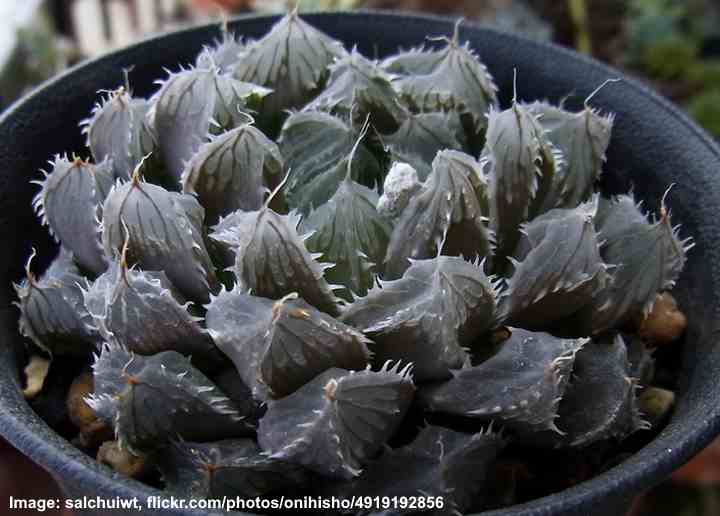
Haworthia cooperi ‘Dielsiana’
Haworthia cooperi is quite resistant to common houseplant pests, so the plant is mostly pest-free. Your plant may get infested with fungus gnats if the soil is too moist. However, in these situations, root rot from overly damp soil will be a bigger problem than gnats.
Appropriate watering techniques are the best way to prevent fungus gnats. Damp soil attracts these pesky flying pests. The winged insects tend to live in the top 1” (2.5 cm) of potting soil. While fungus gnats won’t harm your plant, they can become a significant nuisance indoors.
If you get pestered by fungus gnats, remove the top 2” (5 cm) of potting soil and discard it in the trash—don’t compost it. Then, replace the soil with a sterile potting soil suitable for cacti or succulents. Only water the Haworthia cooperi when the top 3” layer of soil is dry.
Further reading: How to Get Rid of Bugs in Houseplants.
Diseases Affecting Haworthia Cooperi Growth
Fungal diseases are the most common type to affect Haworthia cooperi. Roots that sit in soggy soil are the reason why your succulents develop diseased roots. If left untreated, fungal issues can affect plant growth, eventually ending in its death. To revive a succulent affected by a fungal disease, replace the potting soil.
Are Haworthia Cooperi (Translucent Succulents) Toxic?
Haworthia cooperi plants are not poisonous to dogs, cats, or other animals.
Related: How to Care for Succulents: Growing Succulents and Keeping Them Alive
Varieties of Haworthia Cooperi Succulents
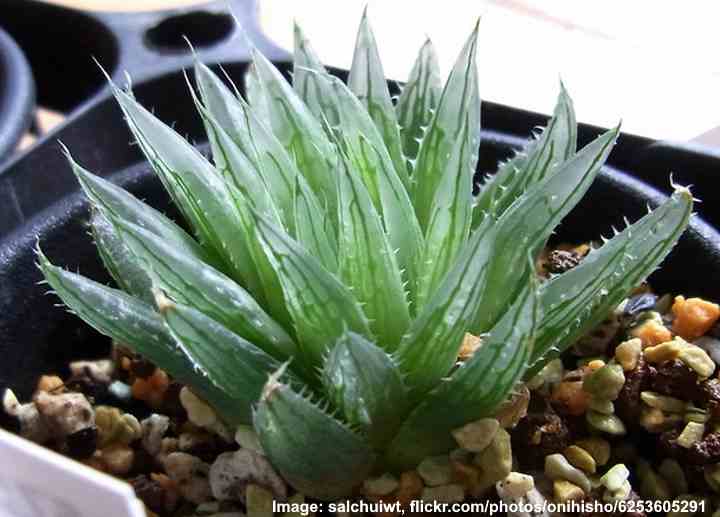
Haworthia cooperi ‘Gracilis’
The succulent species Haworthia cooperi contains a diverse range of cultivars. All of the succulent species are clumping plants with fleshy leaves growing in a rosette shape. Also, all of the Haworthia cooperi cultivars are identified by translucent parts in their leaves.
Here are some of the more popular Haworthia cooperi cultivars:
Haworthia cooperi ‘Pilifera’—Identify this Haworthia species by its short, stumpy see-through leaves. The triangular-shaped leaves have a bluish-green appearance. The low-growing plant grows up to 12” (30 cm) in diameter.
Haworthia cooperi ‘Truncata’—Looking at pictures of this Haworthia cultivar, the plant looks like a bunch of green grapes. The large bulging transparent succulent leaves form a clump up to 3” (8 cm) in diameter. Whitish flowers on long 12” stems may appear in summer.
Haworthia cooperi ‘Tenera’—The ‘tenera’ Haworthia cooperi cultivar has a spiky, star-like growth with long, lanceolate pointed leaves. The fleshy leaves are only slightly translucent on this low-growing succulent.
Haworthia cooperi ‘Venusta’—One of the most stunning Haworthia cooperi varieties with short, plump triangular leaves. The translucent leaves have fuzzy white growth and toothed margins. Leaves grow up to 2” (5 cm) longs
Haworthia cooperi ‘Leightonii’—This clumping succulent is larger than the other type of Haworthia cooperi plants. The fat elongated triangular leaves have an upward growth in a rosette form.
Haworthia Cooperi Translucent Succulent Care – FAQs
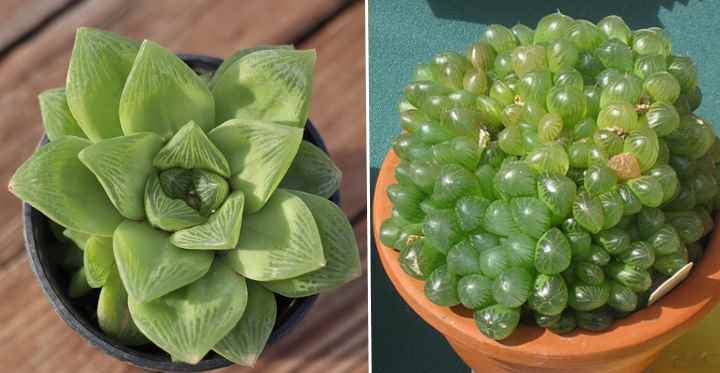
Why is my Haworthia cooperi succulent dying?
Over-watering is the most common reason why Haworthia cooperi plants die. Usually, you’ll notice that the fleshy leaves feel soggy or mushy and may fall off easily. Either hold off watering until the soil dries out, or replace the potting mix with fresh soil.
Does Haworthia cooperi like to be root bound?
Haworthia cooperi plants don’t grow well if they are rootbound. There must be enough space in the pot for water to drain quickly. Haworthias that have roots in wet soil for long periods tend to get root rot and eventually die.
Why is my star window plant (Haworthia cooperi) turning brown?
Too much sunlight can cause Haworthia leaves to turn brown, purple, or red. If you notice discoloration, move the plant to a shadier location. Bright, indirect sunlight will help the plants leaves to get back to their natural green color.
Related articles:
- Haworthia Fasciata (Zebra Plant): Succulent Care and Growing Guide
- Drought Tolerant Plants That Need Very Little Water
- Amazing Types of Succulents (With Pictures)
